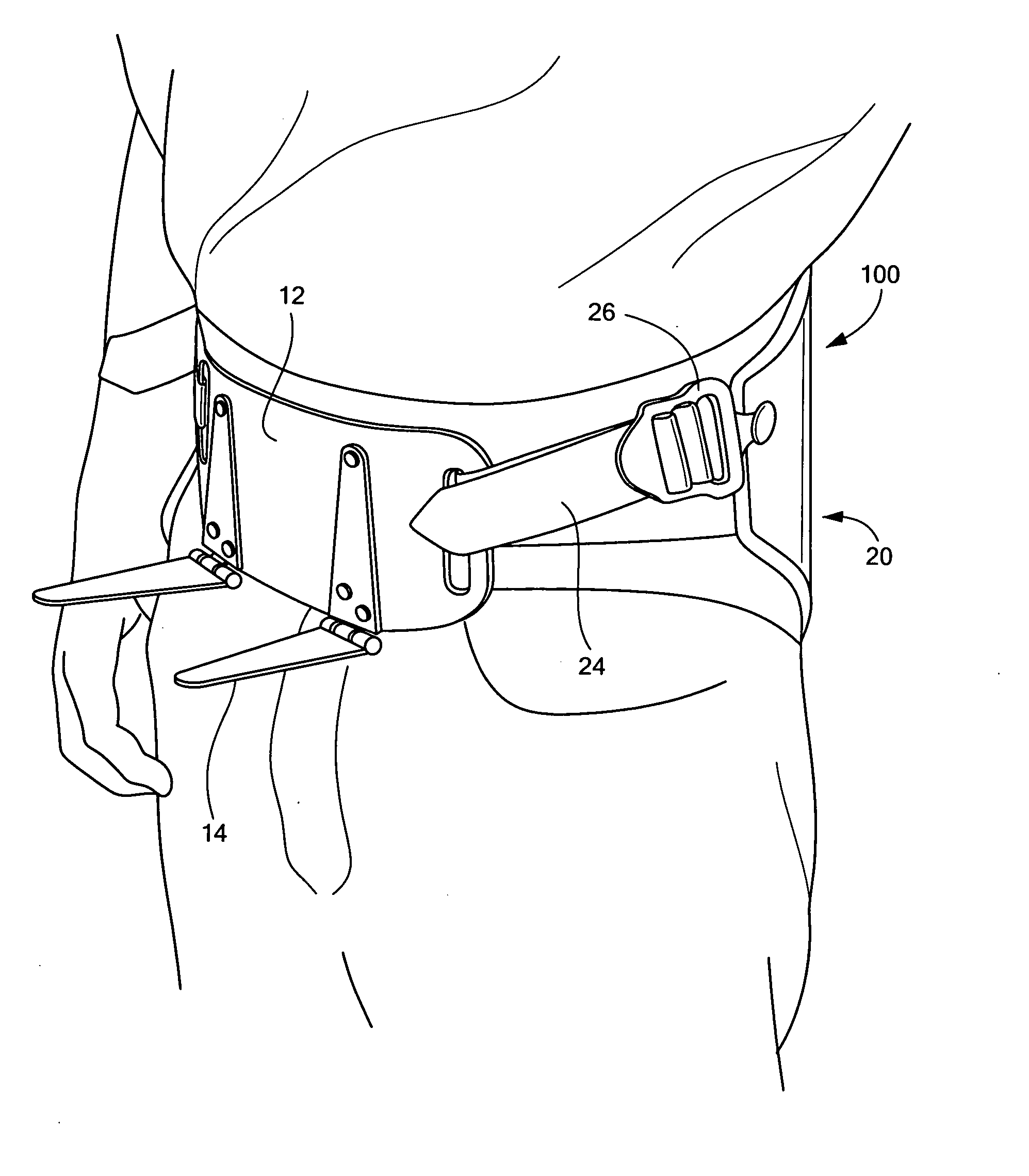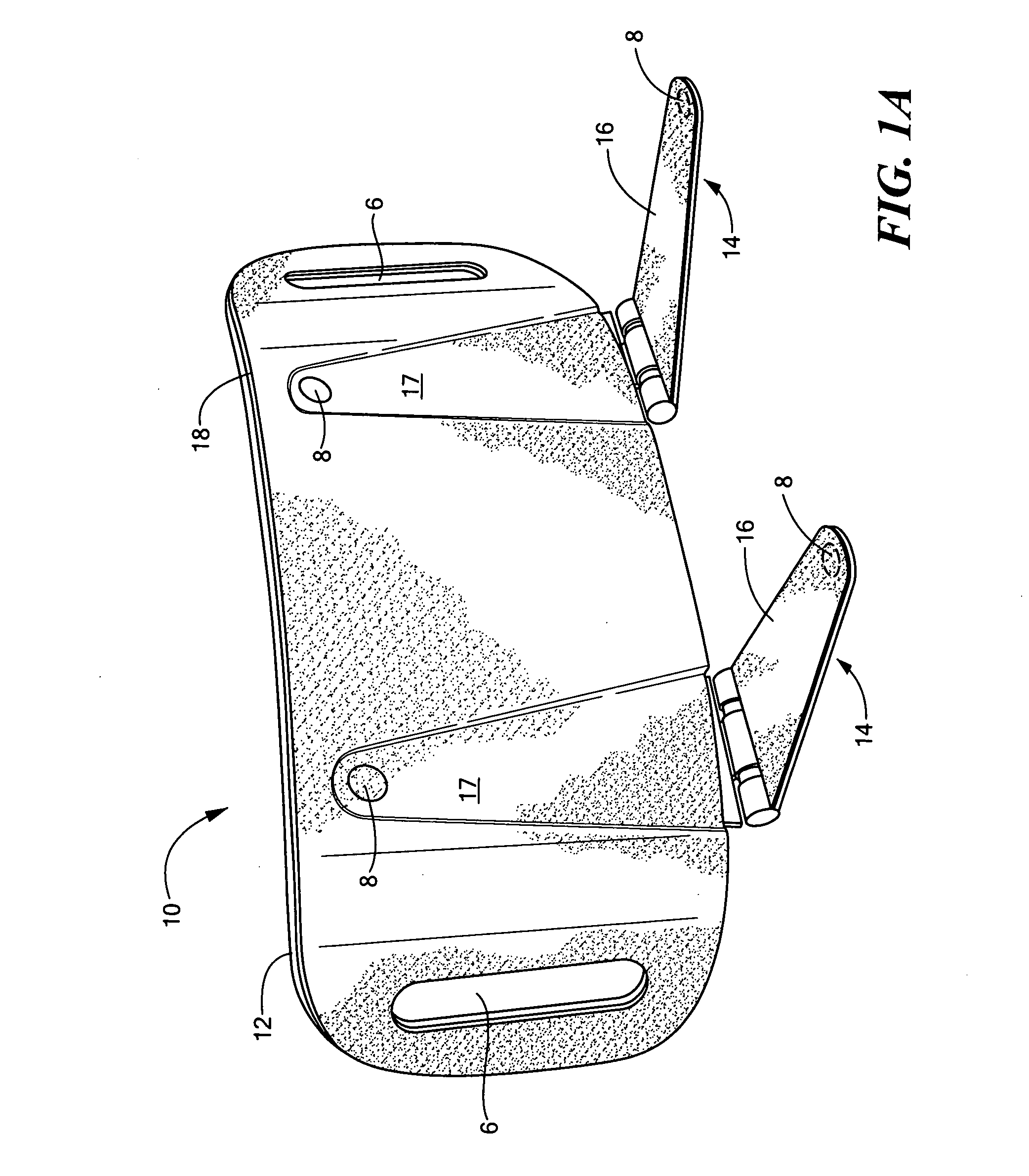Lifting and carrying aid
a technology for lifting and carrying objects, applied in the field of lifting aids, can solve the problems of repetitive strain on the structure, uneven loading of the structure, and injury, and achieve the effects of preventing lower back injuries, reducing incidence, and lifting and carrying objects
- Summary
- Abstract
- Description
- Claims
- Application Information
AI Technical Summary
Benefits of technology
Problems solved by technology
Method used
Image
Examples
Embodiment Construction
[0014] Before providing a detailed description of the invention, it may be helpful to review the state of the art of belt-like devices. A great many types and kinds of belt-like devices exist for encircling and providing support to and for particular areas of the human body. A great majority of such belts are for corrective rather than preventive purposes. Some such belts are designed to urge one or more body parts back into their normal position. Others are constructed to restrict movement of a body part to prevent further injury thereto, or pain resulting from an unwanted movement of a previously injured body member. Still other belts function to compress or rearrange sagging body members to help slim and beautify the figure. More recently, belt-like devices are constructed or intended to prevent body strain, stress, or injury during work. The latter involves a body encircling belt for use by persons who are physically capable of performing lifting and other strenuous material han...
PUM
 Login to View More
Login to View More Abstract
Description
Claims
Application Information
 Login to View More
Login to View More - R&D
- Intellectual Property
- Life Sciences
- Materials
- Tech Scout
- Unparalleled Data Quality
- Higher Quality Content
- 60% Fewer Hallucinations
Browse by: Latest US Patents, China's latest patents, Technical Efficacy Thesaurus, Application Domain, Technology Topic, Popular Technical Reports.
© 2025 PatSnap. All rights reserved.Legal|Privacy policy|Modern Slavery Act Transparency Statement|Sitemap|About US| Contact US: help@patsnap.com



